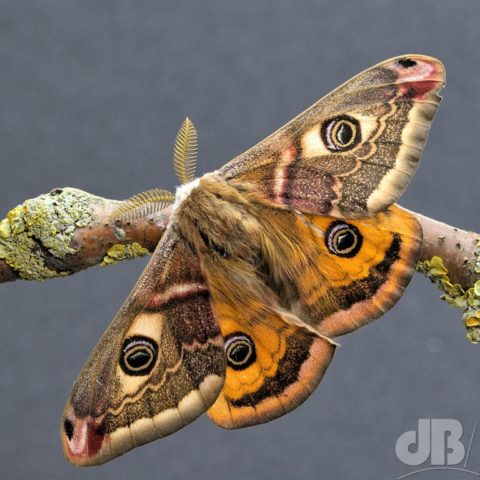You will have spotted by now, my current fixation on the Emperor moth, Saturnia pavonia. It’s Britain’s only resident member of the Saturniidae family (related to the Silkworm moth). I have a pheromone lure that has some (6Z,11Z)-hexadeca-6,11-dien-1-yl acetate on it, which I bought from Anglian Lepidopterist Supplies. UPDATE: As of 2023, fifth season of checking on this species in our neighbourhood, still present and showing.

It took me a while to track down the name of that sex pheromone, exuded by the less colourful, night-flying females, to attract the colourful, day-flying males. I had photographed one or two on the wing but used a homemade butterfly net to catch the specimen you see above. I let it chill out in a pot for a few minutes to get a nice snap showing all of his pareidoliac eyes and his enormous pheromone-detecting antennae without him flapping about.
He’s back in the wild now looking for true love rather than olfactory moth porn. Neither the male nor the female has mouthparts, so they cannot eat, they get all their energy from reserves built up when they were larvae (caterpillars) eating heather or brambles. They have to get it together as soon as they can during the flight time of April to May.
Now, who said moths were grey and dowdy? This is surely the most photogenic moth in the UK.